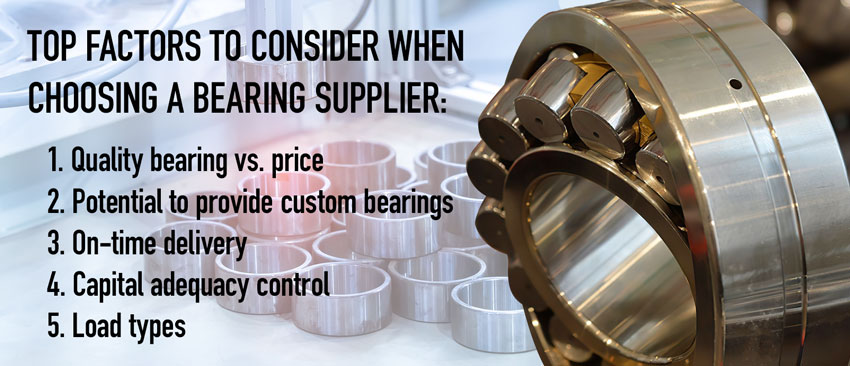All About Volution Bearing
All About Volution Bearing
Blog Article
How Volution Bearing can Save You Time, Stress, and Money.
Table of ContentsExamine This Report about Volution BearingUnknown Facts About Volution BearingUnknown Facts About Volution BearingThe Only Guide for Volution Bearing
An axial (or drive) bearing load is when pressure is identical to the axis of the shaft. A radial bearing tons is when force is perpendicular to the shaft. A mix bearing lots is when parallel and vertical forces create an angular force relative to the shaft. Sphere bearings are made with round balls and can disperse lots over a medium-sized surface.Below is a fast referral for the kind of birthing lots and the ideal ball bearing for the job: Radial (vertical to the shaft) and light tons: Pick radial sphere bearings (also referred to as deep groove ball bearings). Radial bearings are some of the most typical kinds of bearings on the marketplace.
The rounds get in touch with the raceway at an angle which better sustains combination loads. Roller bearings are designed with cylindrical rollers that can distribute loads over a bigger area than ball bearings. They have a tendency to work better for hefty tons applications. Below is a fast referral for the kind of bearing load and the most effective roller bearing for the task: Radial (perpendicular to the shaft) lots: Pick conventional cylindrical roller bearings Axial (thrust) (parallel to the shaft) tons: Pick round thrust bearings Incorporated, both radial and axial, loads: Select a taper roller bearing The rotational rate of your application is the next aspect to look at when choosing a bearing - https://businesslistingplus.com/profile/volutionbearings/.
They do better at greater rates and supply a greater rate array than roller bearings. One reason is that the get in touch with between the rolling aspect and the raceways in a ball bearing is a point as opposed to a line of contact, like in roller bearings. Due to the fact that rolling components press right into the raceway as they roll over the surface area, there is much less surface area deformation taking place in the point tons from round bearings.
The Facts About Volution Bearing Revealed

If this takes place, a basic and typical remedy is to switch the sphere bearing material from steel to ceramic. This keeps the bearing dimension the exact same but uses roughly a 25% greater rate score. Since ceramic material is lighter than steel, ceramic balls create much less centrifugal pressure for any kind of provided rate.
One factor is that the balls are smaller sized and smaller sized spheres evaluate less and generate much less centrifugal force when rotating. Angular contact bearings also have a built-in preload on the bearings which deals with centrifugal forces to properly roll the spheres in the bearing. If you are making a high-speed application, then you'll desire a high-precision bearing, normally within the ABEC 7 precision course.
The smart Trick of Volution Bearing That Nobody is Talking About
High precision bearings are trusted for applications that go quickly due to the fact that they make certain excellent ball and raceway interaction.
Some applications, like reducing device spindles, will just allow a small deviation to happen on its turning elements. If you are crafting an application like this, after that select a high precision bearing because it will create smaller system runouts due to the tight tolerances the bearing was made to. Birthing rigidness is the resistance to the force that causes the shaft to depart from its axis and plays a vital function in lessening shaft runout.

When the angular get in touch with bearings are set up, the offset is removed which creates the rounds to push right into the raceway with no outdoors application pressure. This is called preloading and the procedure boosts birthing rigidness also prior to the bearing sees any application forces. Recognizing your bearing lubrication demands is essential for picking the right bearings and needs to be thought about early in an application layout.
See This Report on Volution Bearing
Lubrication produces a movie of oil between the rolling element and the bearing raceway that aids protect against rubbing and overheating. One of the most typical kind of lubrication is grease, which includes an oil with a thickening representative. The thickening agent keeps the oil in place, so it won't leave the bearing.
After the rolling aspect goes by, the oil and thickening representative join back together. For high-speed applications, understanding the speed at which the oil and thickener can divide and rejoin is essential. This is called the application or bearing n * dm value. Prior to you choose an oil, you need to find your applications ndm value.
Compare your ndm worth to the grease's max speed worth, situated on the datasheet. If your n * dm value is greater than the oil max speed worth on the datasheet, then the oil won't be able to offer adequate lubrication and early failing will happen. One more lubrication option for high-speed applications are oil mist systems which mix oil with pressed air and after that inject it right into the bearing raceway at metered periods.
Report this page